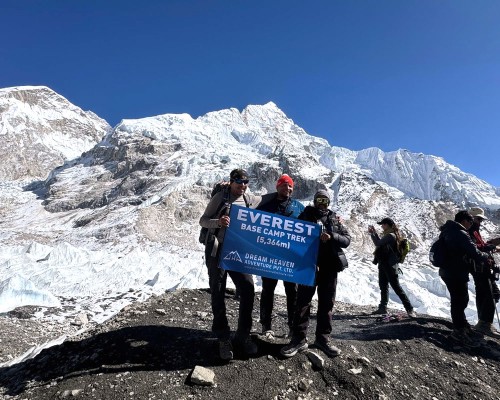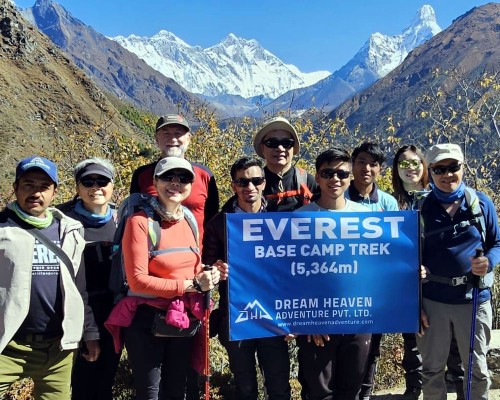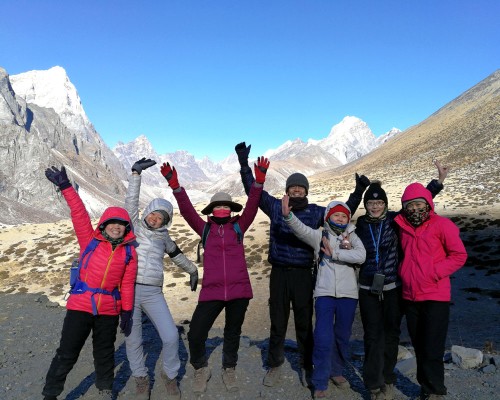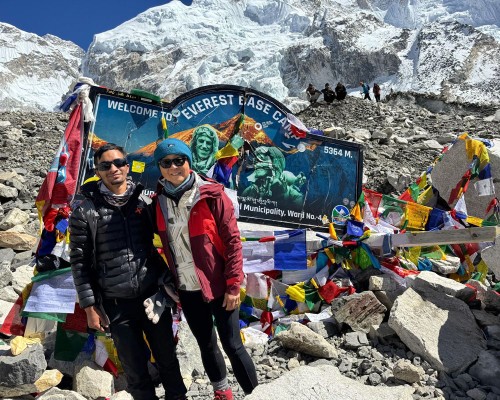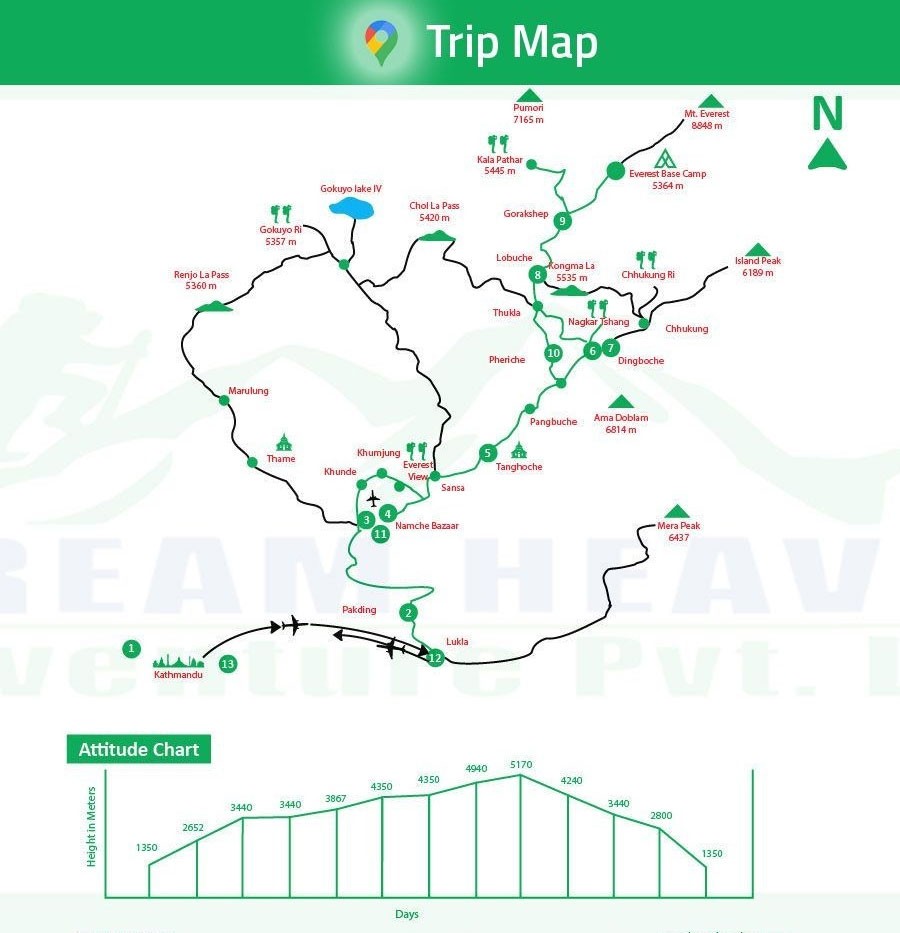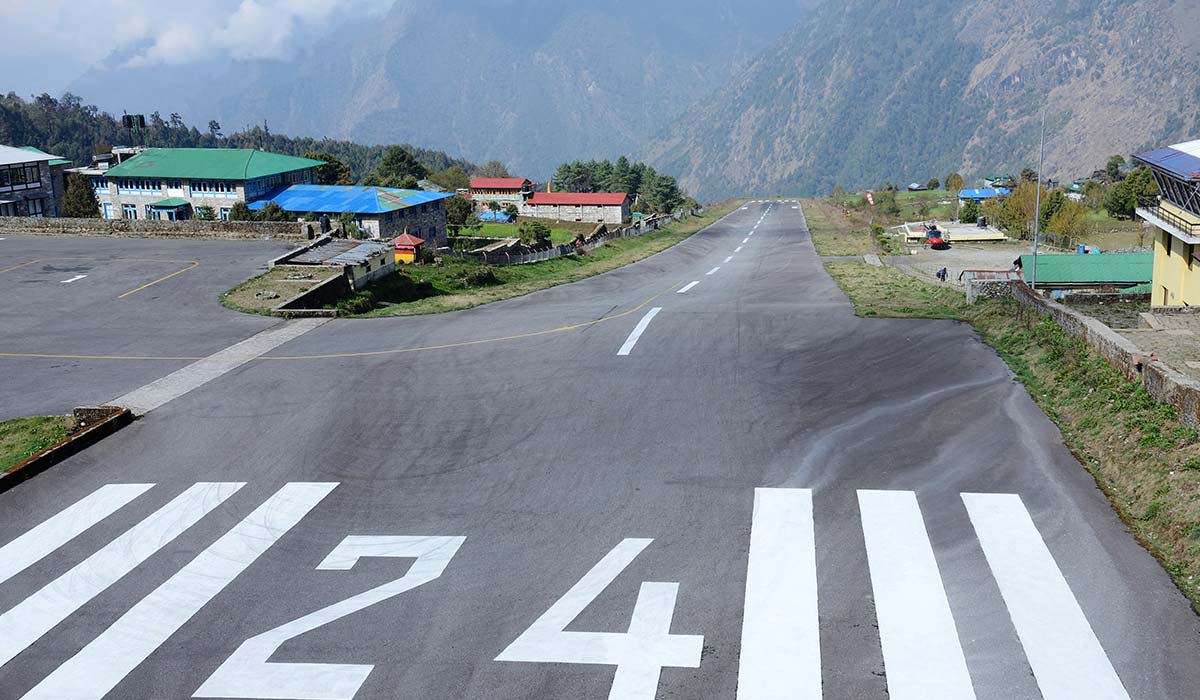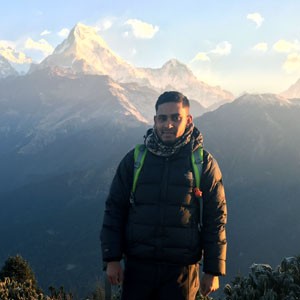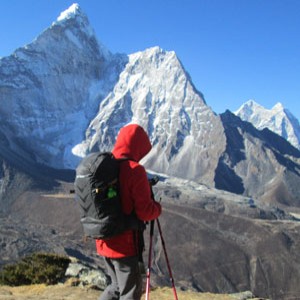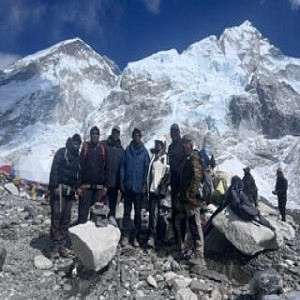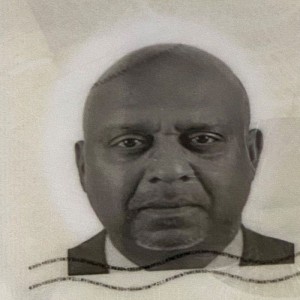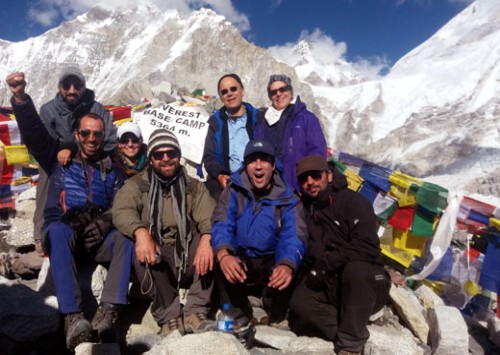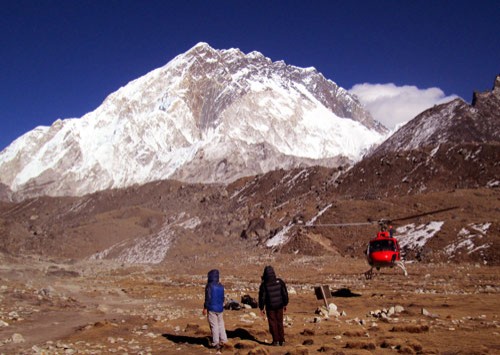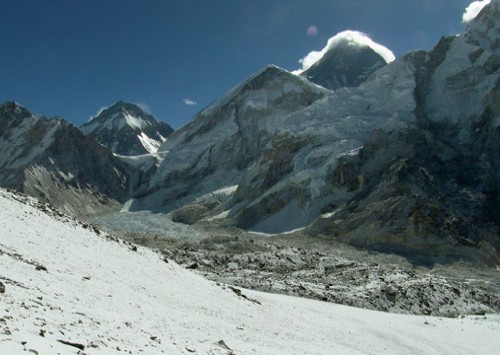Introduction to Everest Base Camp (EBC) Short Trek – 7 Days
The Everest Base Camp Short Trek is a 'shortcut' trek of the classic 14 days and is made to be achieved in just seven days.
EBC Short Trek is one of the world’s most iconic trekking routes, attracting adventurous souls from around the world to step into the region that houses the highest mountain on Earth. This is a historic and traditional trail so you are seeing impressively beautiful views of the Himalayas as well as a deep cultural immersion into the Sherpa way of life.
First pioneered by Sir Edmund Hillary and Tenzing Norgay on the historic mountaineering summit of Mount Everest in 1953, the route to the short Everest Base Camp trek has been a pilgrimage for trekkers and mountaineers ever since.
The trail along the way has grown over the decades, but remains just as wild and rough as it was. From the small mountain town of Lukla, the short Everest Base Camp trek begins, riding with a short but exciting flight from Kathmandu to the base of the Khumbu region. From here the trek follows old trade routes along the way through picturesque Sherpa villages like Namche Bazaar, Tengboche and Dingboche.
And in doing so, the route spans suspension bridges that goes over narrow valleys between cliffs, treks through lush rhododendron forests, passes through high mountain regions, as well as offers rewarding views of some of the world's highest peaks, including Lhotse, Ama Dablam, Nuptse and of course, Everest itself.
This short trek to Everest Base Camp is shorter than some Western treks, but you still get an unforgettable experience while trekking by helicopter back to Lukla.
Despite this, trekkers will still see the views of Everest and the surrounding giants from Kala Patthar and the panorama will unfold before you in all its glory. The trail is dotted along with the Buddhist monasteries and the local Sherpa communities with whom travelers will interact and will be introduced to the profound spirituality of the region.
If you’re short on time, but still want to experience the grandeur of Everest Base Camp, this is the perfect, a short trek to Everest Base Camp that is.
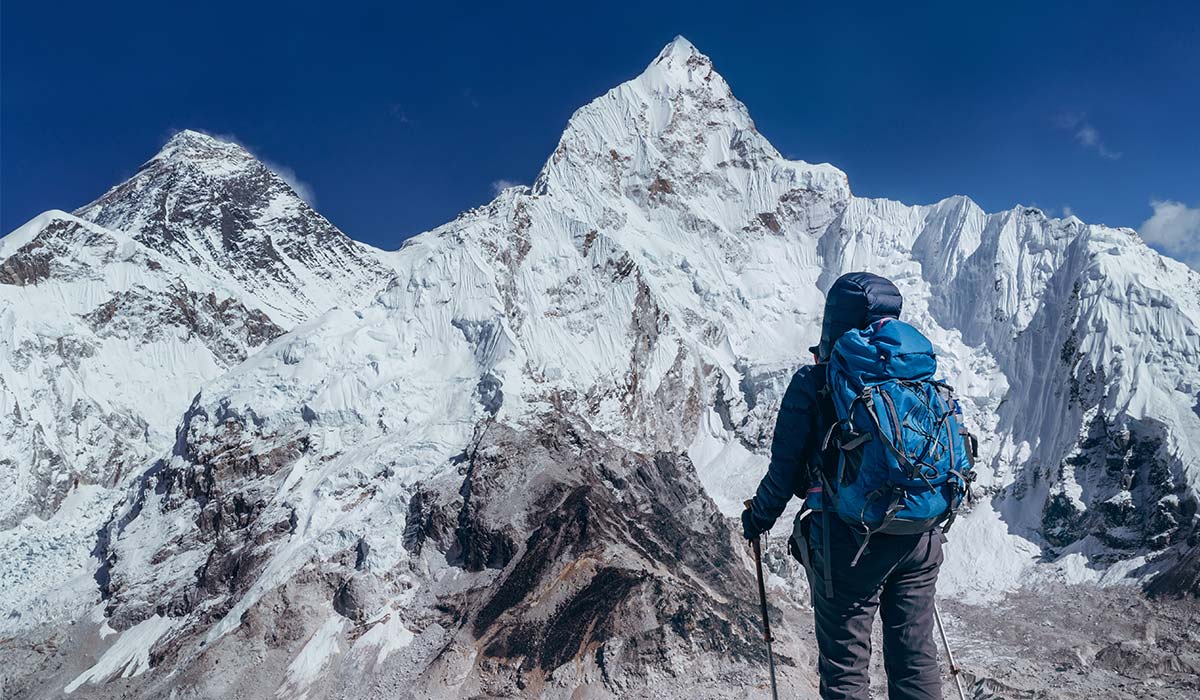
Highlights to Look Forward to
- The adventure begins with one of the most adventurous airports of the world, and an exciting flight to Lukla, putting a path for the start of the trek.
- You will walk through Sherpa villages with its own culture, peace and hospitality and daily life in the high Himalayan.
- A great highlight of the trek is the Tengboche Monastery, not only being quite spiritual, but also providing stunning views from the surrounding mountains including Ama Dablam.
- Trekking to Kala Patthar summit will reward them with wide and spectacular views of Mount Everest and the other giant peaks.
- The trek is through the Sagarmatha National Park, part of UNESCO World Heritage recognized for its biodiversity, including rare wildlife.
- Just about at Everest base camp you can see the famous Khumbu Glacier and icefalls, a dream destination for many adventurers.
- The spectacular aerial view of the Himalayas from Gorak Shep to Lukla has to be enjoyed from a helicopter ride.
- The market town of Namche Bazaar is a cultural and acclimatization place for trekkers, becoming one that has all of the local tradition and modern amenities.
- You will trek through the splendor of the Himalayan ecosystem, with rhododendron and juniper forests.
Who Can Do the Trek to Everest Base Camp?
If you are willing to be adventurous and climb the Short Everest Base Camp Trek, it is not a challenge that everyone can handle or an easy walk in the park either. This trek could be what you’ve ever dreamed of, standing on the base of the world’s tallest mountain, for which you’ll need a combination of endurance and exhilaration.
If you can comfortably walk 5 to 7 hours a day over varying terrain, you are already halfway there. If you lead a physically active lifestyle in particular, amongst those who like hiking, running or cycling, you will have a definite advantage.
Stamina is not the only part of this trek, it’s about your altitude tolerance. The trip begins from Lukla (2,860 meters) and ends at Everest Base Camp (5,364 meters), plus Kala Patthar (5,545 meters), if you choose to climb.
As you rise, the oxygen in your body falls, and the risk of altitude sickness rises, so you feel each step as if it weighs a ton. Altitude problems can even affect seasoned trekkers.
As much as physical strength, mental resilience is also still needed. Sometimes exhaustion, altitude and cold combine to make you go to your limit and it’s your mindset that’s going to keep up your pace.
The Everest Base Camp Short Trek is not technical, but it requires determination. They are certainly not easy, but if you can cope with uncomfortable high altitude trekking, basic crouches and all around weather, the rewards are immense.
If you have preexisting conditions like asthma or heart conditions, it is important to consult with your medical advisor about this trek.
The EBC trek offers a challenge for everyone else with an adventurous trail to take on. It’s not easy, but if you can push yourself then what you’ll get is an unforgettable experience.
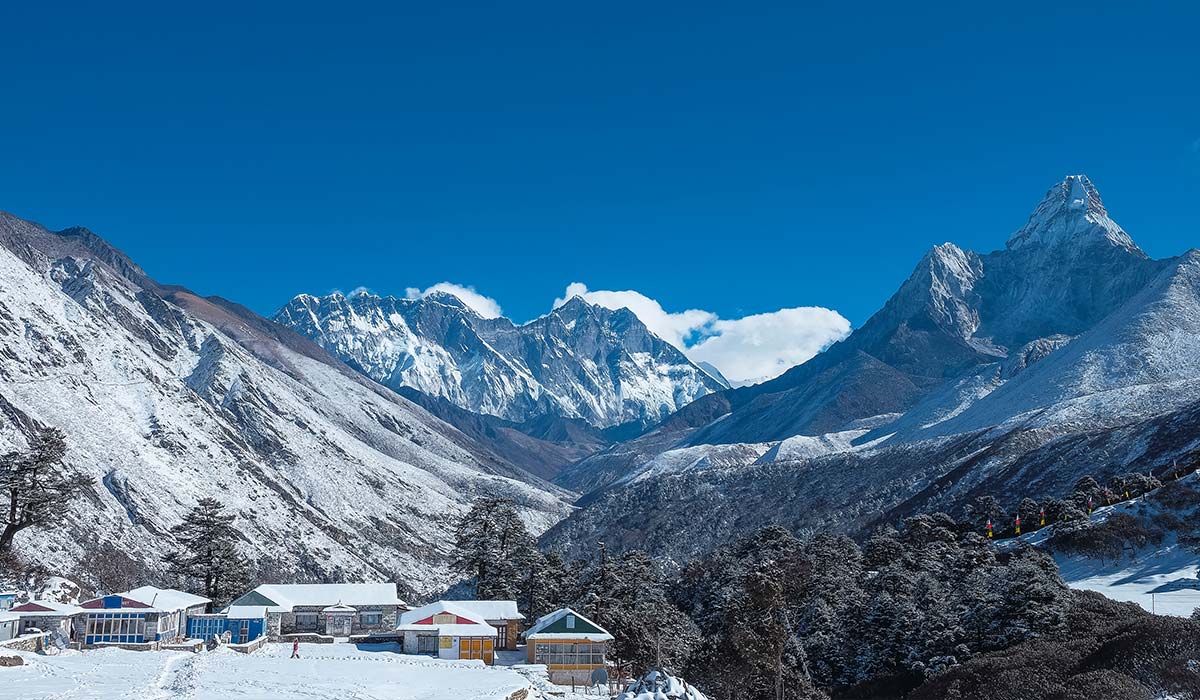
What Makes the EBC Short Trek Nepal So Special?
Short EBC trek is an excellent mix of thrills and hard work that gathers all the best parts of the Everest region in a small adventure. This is a perfect trek for you if you’ve ever been tight on time but still want the Everest experience.
The helicopter return from Gorak Shep. After making it through some of the most incredible landscapes, this helicopter flight rewards you with the chance to see a bird's eye view of Mount Everest, Lhotse, and Nuptse, which you couldn't, with walking on your feet. This is like going back on your trail but with some jaw dropping views.
Yes, the trek might be short but it sure is amazing. You’ll continue to go through the Khumbu region, touching iconic Sherpa villages like Namche Bazaar, where trekkers from the far corners of the Earth have gathered, and Tengboche, home to the Tengboche Monastery, one of the area’s most important spiritual sites.
In Tengboche, you have one of the most stunning mountain views in the world, with Ama Dablam, one of the world’s most beautiful mountains. You’ll be able to listen to the chants of Buddhist monks, going about their thing as they do each day, just to imbue your adventure with an extra spiritual layer.
The true specialty of the short trek is that you get the combination of immersion in culture and natural beauty. You still get to walk through part of Sagarmatha National Park, a UNESCO World Heritage site, where forests shade from lush green rhododendrons to the stark, dramatic highlands near the base camp.
While the time frame will be shorter, you will get Sherpa hospitality, dinners of dal bhat (Nepal’s iconic dish) in comfortable tea houses that will make you feel at home even at the roof of the world.
What You Can Expect During the Everest Base Camp Short Trek?
The Everest Base Camp Short Trek is an exciting adventure in a few high intense days. When you arrive in Lukla one gets greeted by a difference of glaring green valleys and peaks covered in snow that go on for miles.
The trek starts through scenic trails, high suspension bridges and deep narrow valleys between mountains like the Hillary Suspension Bridge as you start your ascent. In fact, these bridges weren't just bridges, they link the trail further, as well as adding an extra mesmerizing element of thrill as you pass over the scene of the dramatic Khumbu landscapes.
You'll pass through the lush region of Sagarmatha National Park, with plentiful living creatures such as rare Himalayan Tahr, musk deer. The Himalayan Monal, Nepal’s national bird, with its own bright glossy colors and uneven terrains. The landscape changes daily into tough, glacial moraine near Lobuche and Gorak Shep, the last stops before Everest Base Camp.
This trek takes you along the massive Khumbu Glacier, the country’s largest glacier, and the Khumbu Icefall, presenting the immense environment you will be steering. The sunrise hike to Kala Patthar (5,545 meters) is probably the one of most rewarding moments on our itinerary which gives us the best sweeping views of Mount Everest, Pumori and Lingtren. At this vantage point, the sun rises over the Himalayas and is picturesque and addicting.
Culturally, the trek immerses you in Sherpa life. A sense of the spiritual connection that the Sherpas have with the mountains will be clear as you pass prayer wheels, mani stone walls carved with Tibetan prayers, and the traditional meals of dal bhat. You’ll be surrounded by beautiful peaks throughout the hike, including Ama Dablam, Lhotse, Thamserku, and Nuptse.
If you want to skip the Lukla flight and prefer a less crowded trekking route, the Manaslu circuit trek is an option, but you must be ready for a 12-day journey.
Preparation Before the Trek
An Everest Base Camp (EBC) short trek to Khumbu region is successful and enjoyable if proper preparation is taken. The trek is not an urban hike and doesn’t require extreme mountaineering skills, but physical fitness and mental strength are necessary, because this is a steep terrain in high altitude.
The physical conditioning should begin at least 2 to 3 months from the starting of the trek. Spend your time on cardio exercises such as running, cycling, hiking on uneven ground to build stamina and endurance. Having strength training for your legs, core, and shoulders will help you to manage the incline and all the load you’ll carry. Practice long distance walks while carrying a backpack, to understand the physical conditions you will be facing in the trek.
Alongside physical fitness, acclimatization, altitude sickness is a possibility for anyone trekking above 2,500 meters. The problem with this short EBC trek is that you are allowed fewer acclimatization days, which is why it is important to understand the symptoms of Acute Mountain Sickness (AMS), headaches, nausea, dizziness.
These effects can be mitigated, more or less slowly, staying hydrated and avoiding alcohol. And it’s a good idea to talk with a physician about altitude sickness medications like Diamox to help with acclimatization on your way in the Short Everest Base Camp Trek.
You’ve also got to make sure all the permits are in place. To enter Sagarmatha National Park and Khumbu Pasang Lhamu Rural Municipality permit will be required which can be booked in Kathmandu or through a trekking agency.
While the trek to Everest Base Camp requires covering high ground, which covers up to 6,000 meters, non-negotiable high altitude trekking insurance, including evacuation by helicopter, is important given that you’ll be trekking to areas far from civilization where evacuation by helicopter may be necessary should you become ill or injured.
Essential Packing List for the Short Everest Base Camp Trek
The Short Everest Base Camp trek is exposed to different weather conditions and an uncivilized environment, so you need to make sure you pack efficiently. The thing is to pack light enough for the cold, and pack enough to protect you from the sun.
The best thing to do is to layer up your clothing. Begin by helping your body regulate its temperature through moisture wicking base layers so you don’t get cold from sweat. A few pairs of quick dry T-shirts and thermal tops will be useful.
When it comes to the mid layer, you’ll want to pack a warm fleece jacket or an insulating down jacket, fleece is not much bulkier than down but provides warmth. The waterproof and windproof jacket and pants on the outside should be present as you will face snow or even rain at higher altitudes.
Your trekking boots are probably your most important footwear. Make sure they are stodgy, waterproof and broken in for the trek otherwise you will get blisters. It is suggested to pack warm socks to keep your feet dry and bring extra pairs. Lightweight camp shoes or sandals are good for comfort during downtime at teahouses. Cough Syrup for Khumbu Cough.
Pack a sleeping bag rated to at least -10°C to -15°C, because nights, especially high above Lobuche and Gorak Shep, can be cold. Sleeping bag liner will warm you even more and won’t even use more space. And you don't want to forget about a warm hat, gloves and a neck gaiter or scarf to fend off cold winds.
A 30-40 liter daypack is needed for bringing important stuff such as a hydration bladder or water bottles along with water purification tablets, snacks and extra layers of clothing. Also, it would be nice to have trekking poles, as they are useful on steep ascents and descents. Other requirements include sunglasses with UV protection, a first aid kit, sunscreen, wet wipes, and a headlamp with extra batteries, should the hike take place in the dark, or early morning.
Don’t forget your toilet and private essentials, passport, and offline map and cash on hand as higher height means lower ATM services.

